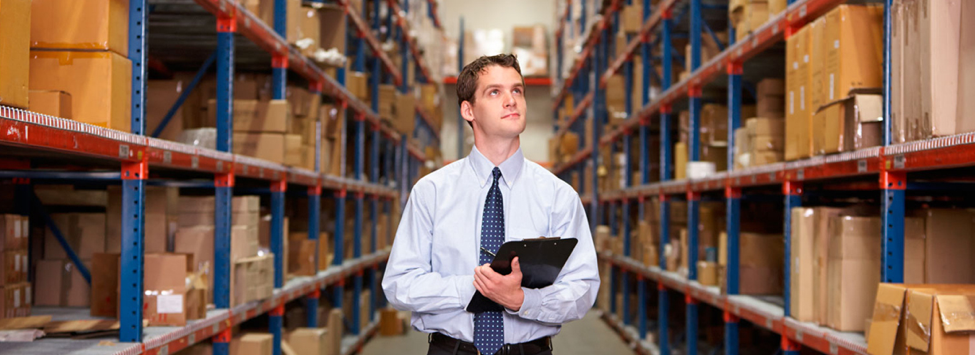As a goal of logistics, keeping a healthy inventory is possible if we implement valuation methods and control systems.
Having an optimal inventory level in the company means having the stock demanded by the client or the raw materials required by manufacturing when they are needed avoiding stocking low-rotation materials or products that represent an unproductive investment.
Keeping a tight inventory control therefore results in both tangible and intangible benefits. On the one hand, we make smart decisions regarding resource management and, on the other hand, we ensure client satisfaction.
Inventory systems
The most convenient system to control inventories will depend on the company’s line of business; however, we choose it based on how frequently we need to perform stock-taking:
- Perpetual System. Carried out through a constant record of how many products or materials enter and exit our warehouse; this method always lets us know how many raw materials for manufacturing or products for sale we have in the warehouse.
- Recurring System. Stock-taking is done occasionally, usually at the end of the fiscal year. We may even perform it several times a year. Its disadvantage is that business activities stop while we carry it out.
Control models and indicators
A proper inventory control tasks us with knowing the demands of manufacturing or clients and finding out how many goods or raw materials we need available to avoid stopping the operation.
The following are some of the indicators and models that let us maintain an optimal inventory control:
- Indicator: Reorder Point. We need to find out when we must place a new order according to the time it takes the supplier to deliver it so we can keep an adequate inventory level. The formula is multiplying the daily demand by the time it takes to get the shipment.
- Indicator: Lowest Inventory Level. This is the lowest number of products we need to have in the warehouse to keep operating normally. Getting close to this lowest level should raise alarms so we can issue a reorder. We calculate this point by subtracting, from the reorder point, the number resulting from multiplying the daily demand of units by the average time it takes us to deliver to clients.
- Model: The Economic Order Quantity (EOQ) aims to define what the exact order will be and the exact time of purchase that will let us lower costs to the fullest. To do this, the EOQ analyzes different variables to find out mathematically the exact amount of orders needed.
- Model: Just-in-Time Inventory. It aims to keep the lowest possible amount of inventory to lower warehouse costs while avoiding having a negative impact on operations.
Valuation Methods
Cost control is the raision d’etre of inventory control because those costs impact the final price of the company’s products and, thus, its competitiveness.
You can find out your inventory’s cost with one of the following valuation methods:
- Valuation by Specific Identification. Refers to recording the purchasing price of each product in the inventory. The sum of all the products’ prices will result in the total value of the inventory.
- First In, First Out. Also known as FIFO, this method values inventory by shipping out the first materials to get in the inventory; in other words, when we sell something, we ship the products or items that have been in the warehouse for the longest time.
- Last In, First Out. Also known as LIFO, this method records the cost of the last products to get in the warehouse as their price; these same products will be the ones to be shipped or used first. This method considers the most current cost of products to perform calculations.
- Average Cost. To arrive to this number, we add the costs of similar products as purchased over time, even if the prices are different. Once we add all the costs, we divide this number by the number of products.
Advantages of a good management
Keeping an efficient inventory control and managing the warehouse are two activities that usually go hand in hand. When we manage these two tasks properly, the company benefits in things like:
- Avoiding shortages that alter the rhythm of the manufacturing line and keep us from meeting orders’ deadlines. It is all about using Just-in-Time logistics in our supply chains, so we have the raw materials or products at the right time and place, thus lowering costs and ensuring a faster response time for our clients.
- Reacting quickly to the fluctuations inherent to high-demand seasons. Predicting trends and demand peaks will help us avoid denying products to clients, which would decrease sales and profits while hurting our reputation.
- Having the necessary reorders on time considering distance, delays, and difficulties that may slow down deliveries. In times when, thanks to e-commerce, clients are getting used to next-day – and even hours-later – deliveries, making sure we have the necessary materials for manufacturing or products ready for sales takes planning and foresight in inventory management.
- Assessing the cost-benefit of buying wholesale to take advantage of discounts correctly. Savings from these types of purchases may vanish when we consider the total cost of managing a warehouse, which includes anything from space use to staff payroll.
- Lowering operational costs of transportation and warehouse. A good inventory management lets us plan the purchases of raw materials according to the market’s demand and handling finished products during storage and transportation.
On the one hand, if we order less raw materials for manufacturing, we will have to send additional orders; on the other hand, buying more than we need may result in stock that is unproductive until its turn to feed the manufacturing process. Both these scenarios create costs that were not foreseen in the initial financial plans; costs that will lower profits.
- Managing the shelf life of goods properly to ensure their quality and freshness. We consider the inherent decay of goods, their expiration dates, their seasonal demand, and their demand according to promotional strategies.
- Detecting losses that may point to theft or delivery inconsistencies. To help us manage this, we may use technologies such as RFID label systems and control software to know the warehouse’s ins and outs accurately.
- Avoiding losses caused by damages or product waste. A well-run warehouse knows precisely what it has and what is used and keeps a record of how products are used and handled. The care with which we handle the inventory should be set in the warehousing policies and procedures.
Keeping the optimal inventory level and a tight control on warehouse and distribution costs helps the competitiveness of our companies’ logistics processes. Solistica guarantees the fulfillment of its clients’ needs thanks to its world-class infrastructure, experienced staff, advanced technology and processes, and comprehensive attention that lets it offer the best storage performance.




